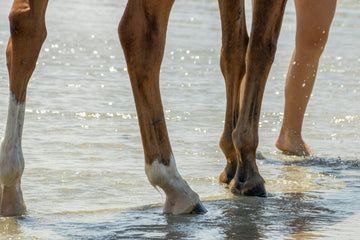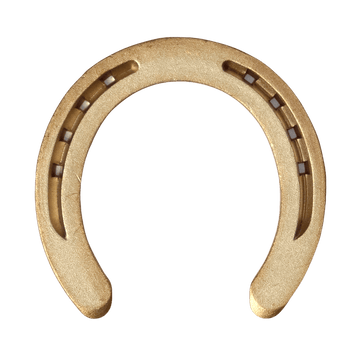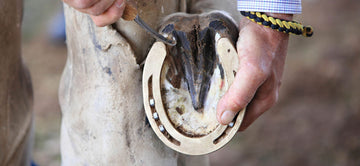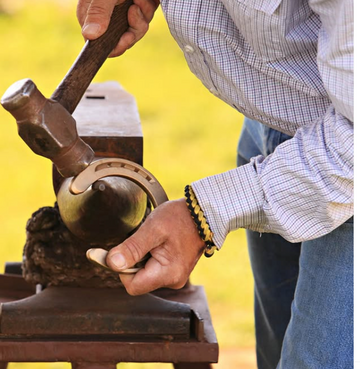Proper hoof care, including cleaning your horse's hooves, is a vital part of maintaining your horse’s overall health and well-being.
Horses rely on their hooves for movement, balance, and support, making regular hoof cleaning and maintenance essential. Neglecting hoof care can lead to pain, lameness, and other serious health problems.
This guide covers everything you need to know about cleaning your horse’s hooves, including anatomy, cleaning techniques, common problems, and long-term care strategies.
Understanding Horse Hoof Anatomy
Before diving into hoof-cleaning techniques, it's essential to understand the structure of a horse's hoof. Each part of the hoof plays a unique role in supporting the horse's movement and overall health.
Hoof Wall
The hoof wall is the outermost part of the hoof, composed of keratin, the same protein found in human nails and hair.
-
Functions:
-
Protects the sensitive internal structures of the hoof.
-
Absorbs shock and distributes pressure evenly during movement.
-
Provides structural support for the horse’s weight.
-
-
Care Tip: Regular trimming by a farrier prevents overgrowth and cracking, ensuring the hoof wall remains strong and healthy.
Hoof Sole
The sole is the underside of the horse's foot, featuring a slightly concave shape that helps absorb impact.
-
Functions:
-
Protects the inner structures of the hoof.
-
Contributes to overall hoof strength.
-
Care Tip: Keeping the sole clean and free of debris prevents infections and maintains hoof health.
The Frog
The frog is the V-shaped structure located in the center of the hoof’s underside.
-
Functions:
-
Aids in shock absorption.
-
Improves circulation by pumping blood back up the leg.
-
-
Care Tip: Clean the frog gently to remove dirt and debris, as it is more sensitive than other hoof areas.

The Importance of Hoof Health
Healthy hooves are critical for a horse’s comfort, mobility, and overall quality of life. Neglecting hoof care can lead to issues such as:
-
Laminitis: Inflammation of the sensitive tissues inside the hoof, often leading to severe pain and lameness.
-
Thrush: A bacterial infection affecting the frog, characterized by a foul odor and discharge.
-
Hoof Cracks: Caused by dryness, poor trimming, or external trauma, leading to structural weakness.
Regular hoof cleaning and maintenance can prevent these issues, ensuring your horse remains healthy and active.
Preparing to Clean Your Horse’s Hooves
Proper preparation is essential for safe and effective hoof cleaning. Ensuring both you and your horse are ready can make the process smoother and less stressful.
Gather Essential Tools
Having the right tools on hand is the first step to effective hoof care:
-
Hoof Pick: Used to remove dirt, rocks, and debris lodged in the hoof.
-
Stiff Brush: Cleans smaller particles and smooths the hoof surface.
-
Hoof Brush: An essential tool for removing debris missed by the hoof pick and for thorough inspection of the hoof.
-
Hoof Knife (Optional): Used by professionals to trim excess growth.
Prepare Your Horse
-
Secure Your Horse: Use a halter and lead rope to tie your horse securely, ensuring it cannot move suddenly. Cross-ties are also an effective option.
-
Approach Calmly: Speak softly and move gently to avoid startling your horse.
-
Check Comfort Levels: Ensure your horse is relaxed and comfortable before beginning.

Cleaning Your Horse’s Hooves
Step-by-Step Guide
-
Lift the Hoof:
-
Stand beside your horse, facing the tail.
-
Place your hand on the horse’s shoulder or hip for balance.
-
Gently squeeze the fetlock joint to signal the horse to lift its hoof.
-
When lifting the hind foot, ensure proper positioning to avoid potential kicks and maintain safety.
-
Remove Debris:
-
Use a hoof pick to remove dirt, mud, and rocks. Start at the heel and work toward the toe.
-
Pay special attention to the grooves around the frog, as debris tends to accumulate there.
-
Brush the Hoof:
-
Use a stiff-bristled brush to clean off remaining dirt and smooth the hoof’s surface.
-
Inspect the Hoof:
-
Look for cracks, discoloration, or signs of infection.
-
Repeat the process for all four hooves.
Safety Tips
-
Avoid standing directly behind your horse to reduce the risk of being kicked.
-
Always communicate with your horse through touch and voice to keep them calm.
Common Hoof Problems
Despite regular cleaning, hooves can still develop issues that require attention. Identifying these problems early can prevent more severe complications.
Hoof Cracks
-
Causes: Inadequate cleaning, infrequent trimming, or poor shoeing.
-
Prevention: Regular trimming and moisturizing during dry weather.
-
Solution: For severe cracks, consult a farrier for corrective measures.
Thrush
-
Symptoms: A foul-smelling discharge from the frog and possible lameness.
-
Treatment: Clean the hoof thoroughly and apply an antibacterial solution as recommended by your veterinarian.
-
Prevention: Keep the hoof clean and dry, especially during wet weather.
Abscesses
Causes: Bacterial infections caused by sharp objects penetrating the sole can lead to hoof abscesses.
Symptoms: Swelling, heat, and visible discomfort are common indicators of hoof abscesses.
Action: Seek veterinary care to drain the abscess and prevent further complications.
Maintaining Healthy Hooves
Nutrition and Diet
A balanced diet plays a significant role in hoof health.
-
High-Forage Diet: Promotes horn growth and overall hoof strength.
-
Supplements: Consult an equine nutritionist about adding vitamins and minerals like biotin and zinc.
Exercise and Movement
Regular movement stimulates circulation in the hooves, promoting growth and strength.
-
Turnout Time: Allow your horse to roam freely in a safe pasture.
-
Daily Exercise: Incorporate walks, rides, or in-hand exercises into your routine.
Seasonal Hoof Care
-
Dry Seasons: Use hoof moisturizers to prevent cracking.
-
Wet Seasons: Keep hooves clean and dry to avoid bacterial infections. For barefoot horses, consider using hoof boots during hard ground conditions in summer and ensure proper maintenance during wet and cold winter conditions.
Working with a Farrier
Partnering with a skilled farrier ensures your horse’s hooves remain in excellent condition.
Regular Trimming
Schedule visits every 4–6 weeks to have your horse's hooves trimmed regularly. Having your horse's hooves trimmed regularly prevents overgrowth and maintains hoof health. Farriers can also address issues like imbalances or poor shoeing.
Expert Advice
Farriers provide valuable guidance on selecting hoof products and addressing specific concerns.
Additional Tips and Techniques
How Often to Clean Hooves
Clean your horse’s hooves daily to prevent debris buildup and detect potential problems early. Regularly cleaning horses' hooves daily is crucial to prevent conditions like thrush, which can develop in damp and dirty environments.
Recommended Products
-
Hoof Hardeners: Strengthen weak or brittle hooves.
-
Antifungal Treatments: Combat infections like thrush.
-
Hoof Oils: Keep hooves moisturized in dry conditions.
Frequently Asked Questions
How often should a horse's hooves be cleaned?
Ideally, horse owners should clean hooves daily, especially before and after rides.
How do wild horses clean hooves?
Wild horses naturally clean their hooves through constant movement on varied terrain.
What does soaking hooves in Epsom salt do?
Epsom salt soaks can draw out infections and reduce swelling in cases of abscesses.
Should a horse's hooves be picked clean daily?
Yes, daily cleaning helps prevent infections and ensures hooves remain healthy.
The Essential Guide to Cleaning Horses’ Hooves Conclusion
Cleaning your horse’s hooves is an essential aspect of equine care that directly impacts their comfort, mobility, and health.
By understanding hoof anatomy, using the right tools, and following a consistent cleaning routine, you can prevent common problems and ensure your horse stays active and happy.
Combine daily care with regular farrier visits, proper nutrition, and seasonal maintenance for optimal hoof health. With diligent care, your horse’s hooves will remain strong and healthy for years to come.
Taking the time to care for your horse’s hooves is an investment in their overall well-being, ensuring they can live a comfortable and active life.










